Wiki History on Toyota Hilux/Pickup
#1
Contributing Member
Thread Starter
Join Date: Apr 2006
Location: TENN Native Languishing in Virginia
Posts: 4,787
Likes: 0
Received 34 Likes
on
14 Posts
Wiki History on Toyota Hilux/Pickup
Interesting wikipedia article:
The History Of Toyota Hilux PICK UP
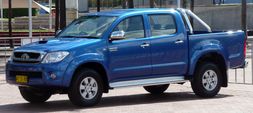
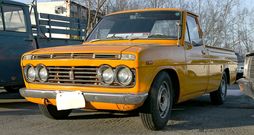
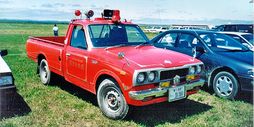
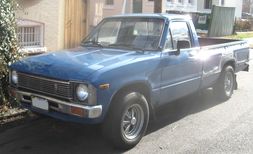
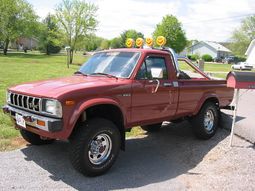
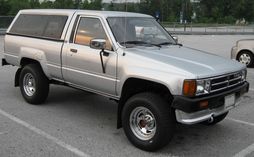
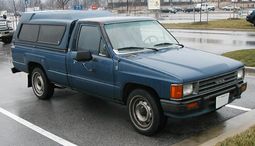
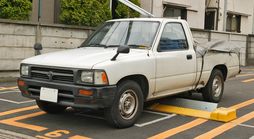
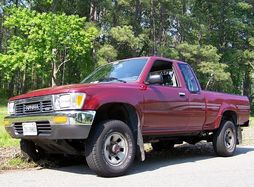
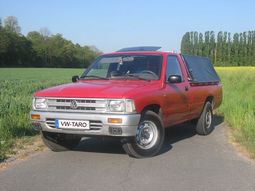

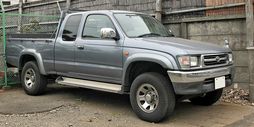
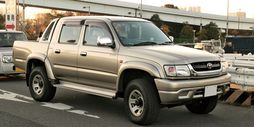
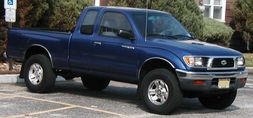
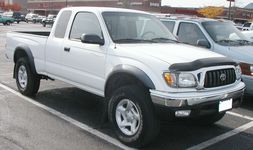
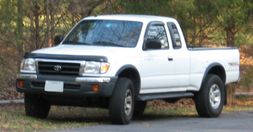

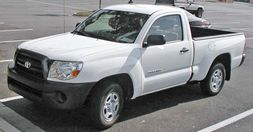
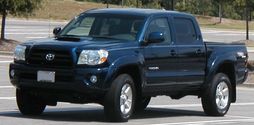
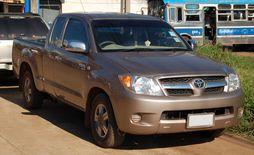
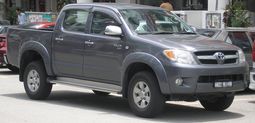
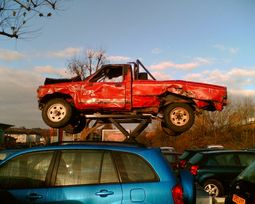
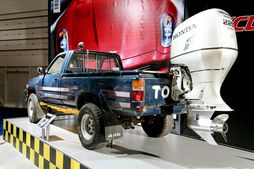
 Toyota Hilux
Toyota Hilux
This article is about the pickup sold in North America until 1994, and other markets as of today. For the 1995-present small pickup sold in North America, see Toyota Tacoma. The Toyota Hilux, and Toyota Tacoma, are compact pickup trucks built and marketed by the Toyota Motor Corporation. The Hilux name was adopted as a replacement for the Stout in 1969, and remains in use worldwide. In North America, the Hilux name was retired in 1976 in favor of Truck, Pickup Truck, or Compact Truck, until it was renamed the Tacoma in 1995. One popular option package, SR5 (Sport Rally), also became synonymous with the truck, even though it was used on other Toyota models as well. In 1984, the Trekker, the camper version of the Hilux, was changed to the 4Runner in North America and Australia, and as the Hilux Surf in Japan. The 4Runner, now a full SUV, shares few visual cues with its brother Tacoma in more recent models.
As the Hilux name was dropped in the US in 1976, any details listed here purporting to relate to the Hilux from that date may not be entirely correct when applied to the vehicle that continues to be marketed by Toyota as the Hilux throughout the rest of the world.
The product lines for the US and elsewhere diverged at that point and in many cases on a year for year basis the vehicles sold in the US only resemble the Hilux, with major mechanical/chassis differences.
Predecessor
1935
The original Toyota pickup was the 1935 Type G1 truck. It shared many components with the company's Type A1 sedan, and was a 1.5ton stake-bed commercial truck.
1947
After World War II, Toyota returned with a compact pickup truck, the Toyopet Model SB. This was the ancestor of the Stout, and remained in production from 1947 through 1957.
Engine:
Toyota entered the American market with the 1964 introduction of the second generation Stout. It was larger than the similar Datsun and Mazda compact trucks, and looked like a Chevrolet C/K.
Engine:
The Hilux started production in March 1968[1] as the RN10 in short wheelbase form with a 1.5L engine. This was upgraded to a 1.6L I4 engine in February 1971.
Non American markets:
In spite of the name "Hilux", it was a highly-luxurious vehicle only when compared to the Stout. Hilux was engineered and assembled by Hino Motors to augment the Hino Briska, Briska and Stout or to replace them in some markets (e.g. America). For the American market, the only body style was a regular cab short bed and all were rear-wheel drive. It used a typical truck setup of A-arms and coil springs in front and a live axle with leaf springs in back. A 4-speed manual transmission was standard.
American markets:
In the middle of 1972, the 1973 Hilux was released as the RN20. A more-comfortable interior was specified along with exterior updates. A 7.5ft (2.3m) "long bed" was optional for the first time in America, although it had been available in other markets since April 1969.[1]
American markets:
Engine:
In America the Hilux saw the use of four wheel drive. It had a solid front axle and leaf suspension. The body saw a redesign that included single round headlights and a less complex body. These trucks became known as first generation 4WDs.
For the US market, the 1981 model year saw a vehicle development deal between Toyota and Winnebago Industries (primarily) and two other aftermarket customizers. Toyota was attempting to enter the SUV market. The vehicles which resulted from this collaboration were the Trekker (Winnebago), Wolverine, and the Trailblazer (Griffith). All three employed the Hilux 4x4 RV cab and chassis, and an all-fiberglass rear section (the Trailblazer had a steel bed with a fiberglass top). There were at least 1,500 Trekkers, 400 Trailblazers (only 41 currently registered by the DMV), and an unknown number of Wolverines sold in North America. Research and development work on the Trekker lead to the development of the 4Runner, which was released in 1984.. The 4Runner was sold in America, the United Kingdom and Australia. The 4Runner was called the Hilux Surf in some other markets (e.g. Japan).
Engines:
The big news for the 1984 redesign was the introduction of the Xtracab two-row extended cab option. Also two diesel engines were offered, the 2L and the turbocharged 2L-T. The diesels were discontinued in the U.S. after the 1985 model year, for unknown reasons. The next year saw the introduction of an optional fuel injected engine, the 22R-E, and a turbocharged option, the 22R-TE. The solid front axle was swapped out for an independent front suspension/torsion bar setup in the 4x4 model in 1986, and optional automatic front locking hubs and an electronic transfer case was added as well. A V6 engine was introduced in 1988.
Engines:
The next redesign, in 1989, saw a longer-wheelbase option, 122in (309.9cm) versus 103in (261.6cm) for the regular wheelbase. One-piece cargo box walls eliminated the rust-prone seams found in earlier models. The V6 Xtracab SR5 earned Motor Trend magazine's Truck of the Year award that year. Production began at the NUMMI plant in Fremont, California in 1991.
The Hilux (Seventh Generation)in South America was produced in Colombia since 1994 to 1998 by SOFASA (Only Petrol engine 2.4cc), sold and export to(Venezuela and Ecuador). For Argentina, Brazil, Uruguay was produced in Argentina since 1997 to 2005 (Sarate Plant. Petrol and Diesel engine). Bolivia, Chile, Paraguay, Peru was imported from Japan since 1989 to 1997 (Petrol and Diesel Engine). South American 7-G Versions:
Engines:
The name Tacoma comes from an Lushootseed word for the volcano Tahoma in the Cascade Mountains, known as Mount Rainier in English, which is visible from Tacoma, Washington.
The Tacoma frame differs from the Hilux frame, although both appear similar from the outside. Both the Tacoma and Hilux variants are sold in Mexico.
The ninth generation of compact pickup trucks from Toyota, was radically updated, with a new frame and body, new suspension, and new engines. All versions now featured coil springs in front with a live axle and leaf springs in back.
The Tacoma was restyled in 1998 when the front fascia and the frame were the primary changes as well as the addition of new badging. It was also restyled in 2001 when a new "double cab" (crew cab) option was added, and a flashy S-Runner was offered as well.
Engines:
Japan
Toyota shifted production from the Hilux to the Tiger in the 1990s and made it the global export hub. The Thailand made Hilux Tiger went through the following versions: 1998-1999 - Hilux Tiger with 5L engine 2000-2001 - Hilux Tiger with 5L EFI (Electronic Fuel Injection) Engine 2001 - Hilux Tiger with 1KZ engine (short lived replaced right away with D4D engine) Late 2001- late 2004: Hilux Tiger SportCruiser with D4D engine[2]
Seventh generation
Both the Tacoma and the Hilux were updated in 2005. The Tacoma was based on the new Land Cruiser Prado chassis, while the Hilux rides on a refreshed version of the ladder frame found on previous versions. The new Hilux got bigger, now classified as a mid-size pick up. The Tacoma had a new 4.0 Liter V6 engine that produces 236horsepower (176kW) and 266ft·lbf (361N·m) torque. Its design was very similar to the 4Runner.
Hilux sold in European, Australian and Asian Markets are built and assembled in Thailand and is known as the Hilux Vigo, for the South African and Icelandic markets the Hilux is built in Durban, South Africa. Those sold in Argentina, Bolivia, Brazil, Chile, Paraguay, Peru, Uruguay and Mexico (only 2wd, petrol and diesel) single cab, double cab and new for 2009; exclusive 5-door SUV (SW4) are made in Argentina.[3] The Hilux Vigo platform was used as the basis for Toyota's IMV program which spawned the Innova MPV and Fortuner SUV/PPV.
The new Tacoma won the Canadian Car of the Year Best New Pick-up award and was Motor Trend magazine's Truck of the Year for 2005. In Malaysia, the Hilux is only available in 2.5 L with the option of single cab or double cab. The double cab model has an automatic transmission variant. It uses the same engine as other Asian countries (in-line, 4-cylinder, 16-valve, DOHC Turbo Diesel with common rail direct injection), however the specs for Malaysia’s models are slightly different in that its maximum output is 75kW at 3600rpm and maximum torque is 260nm at 1600-2400 rpm.
Engines (markets):
A facelifted version of the Hilux was unveiled by Toyota's Malaysian distributors, UMW Toyota Motor in August 2008.[4] Toyota has released Left Hand Drive facelifted Hilux Vigo in August 2008 while Right Hand Drive Hilux Vigo 2009 facelifted model is expected to be released in September 2008.[5]
Toyota also introduced rear access system called "Smart Cab" to replace all Xtra Cab models in E and G grade. Purely done by Thai engineer team. Smart Cab models are only for Thailand domestic market.
Reputation
The Hilux has gained a reputation for exceptional sturdiness and reliability, even during sustained heavy use, and is often referred to as "The Indestructible Car". This was further reinforced when on the BBC motoring show Top Gear, a 1988 Hilux with 190,000miles (308,000km) on the odometer was subjected to extraordinary abuse. This consisted of driving it down a flight of steps, scraping buildings, crashing headlong into a tree, being washed out to sea and completely submerged, driving it through a garden shed, dropping a caravan onto it, hitting it with a wrecking ball, setting the cabin & bed area on fire,[6] and, finally, placing it on top of a 240-foot (73m) block of flats that was subsequently destroyed by a controlled demolition.[7] Although it was now suffering from severe structural damage, the truck was still running after being repaired without spare parts and only with typical tools and equipment that would be found in a car's toolbox, such as spanners, motor oil, and a monkey wrench (adjustable spanner).[8] The Hilux currently resides as one of the background decorations in the Top Gear studio.
In the 2006 series (Series 8, Episode 3), a Hilux was chosen by Jeremy Clarkson as his platform for creating an amphibious vehicle. With assistance, Clarkson rigged the truck with a massive outboard motor and steering mechanism in the pickup bed. The truck, redubbed the "Toybota" (a portmanteau of "Toyota" and "boat"), was driven by Clarkson over several miles by road and two miles (3km) across open water, before capsizing during a quick turn. Once recovered, the vehicle was moved back to the Top Gear Studio, where a confident Clarkson stated that he would be the only one capable of driving his car home, since it was the indestructible Hilux. However, Clarkson could not get the Hilux started which led his co-hosts to believe that Clarkson had finally destroyed the "indestructible". In the 2007 series (Series 10, Episode 2), Clarkson opted for a Nissan pickup instead of a Hilux in a second amphibious challenge, successfully crossing the English Channel in the vehicle.
In 2007, Top Gear ran a special program in which Clarkson and James May raced a customized 2005 model Hilux to the magnetic north pole from Northern Canada against Richard Hammond using a dog sled. The race, known as the Hilux Arctic Challenge, made the truck the first car to make it to the magnetic North Pole.
Outside television, these vehicles have been known to exceed 300,000miles (~500000km) with regular maintenance. It is also infamous for being used as an improvised fighting vehicle - a "technical" - by militias and irregular military forces, especially in Third World conflicts. The Toyota War between Libya and Chad was so named because of the use of Hilux trucks as light cavalry by the Chadian army). These vehicles have also been used in the Iraq war as Improvised Explosive Devices (IED). Militias have been know to outfit this vehicle with stolen, post-Soviet missiles and equipment. The Toyota War saw use of the Hilux as a pulling vehicle which served as an aircraft tug and tank pull for the T-62 heavy tank. There are currently 37 customized Hilux used by the PLA in the Southern region of China.
In October 2007, the Swedish car magazine Teknikens Värld performed an evasive manoeuvre (a moose test) that revealed that the Hilux pickup truck was less than ideal for turning abruptly at speed. The car failed the test and only the driver's skill prevented it from overturning. After the test Toyota stopped the sales of Hilux equipped with 16inch wheels in Europe.
Notes and references
<li id="cite_note-ToyotaId-0">^ a b c d e f g Toyota Vehicle Identification Manual, Toyota Motor Sale Co., Ltd. - Export Parts Department, 1979, 97911-79 <li id="cite_note-1">^ "Detailed Specs of Thailand made Hilux Tiger 1998-2004". <li id="cite_note-2">^ www.auto-car-shop.com Hilux 2009, came into Mercosur! - accessed 22 November 2008 <li id="cite_note-3">^ "Toyota Hilux facelifted - initial details revealed". <li id="cite_note-4">^ "Photos and some higlights of 2009 LHD and RHD Toyota Hilux Vigo 2009". <li id="cite_note-5">^ Top Gear: Killing a Toyota Part 1 BBCWorldwide on Youtube. Added: March 30, 2007 <li id="cite_note-6">^ Top Gear: Killing a Toyota Part 2 (a) BBCWorldwide on Youtube. Added: March 30, 2007 <li id="cite_note-7">^ Top Gear: Killing a Toyota Part 2 (b) BBCWorldwide on Youtube. Added: March 30, 2007
The History Of Toyota Hilux PICK UP























 Toyota Hilux
Toyota HiluxThis article is about the pickup sold in North America until 1994, and other markets as of today. For the 1995-present small pickup sold in North America, see Toyota Tacoma. The Toyota Hilux, and Toyota Tacoma, are compact pickup trucks built and marketed by the Toyota Motor Corporation. The Hilux name was adopted as a replacement for the Stout in 1969, and remains in use worldwide. In North America, the Hilux name was retired in 1976 in favor of Truck, Pickup Truck, or Compact Truck, until it was renamed the Tacoma in 1995. One popular option package, SR5 (Sport Rally), also became synonymous with the truck, even though it was used on other Toyota models as well. In 1984, the Trekker, the camper version of the Hilux, was changed to the 4Runner in North America and Australia, and as the Hilux Surf in Japan. The 4Runner, now a full SUV, shares few visual cues with its brother Tacoma in more recent models.
As the Hilux name was dropped in the US in 1976, any details listed here purporting to relate to the Hilux from that date may not be entirely correct when applied to the vehicle that continues to be marketed by Toyota as the Hilux throughout the rest of the world.
The product lines for the US and elsewhere diverged at that point and in many cases on a year for year basis the vehicles sold in the US only resemble the Hilux, with major mechanical/chassis differences.
Predecessor
1935
The original Toyota pickup was the 1935 Type G1 truck. It shared many components with the company's Type A1 sedan, and was a 1.5ton stake-bed commercial truck.
1947
After World War II, Toyota returned with a compact pickup truck, the Toyopet Model SB. This was the ancestor of the Stout, and remained in production from 1947 through 1957.
Engine:
- 995cc I4, 27hp (20kW)
Toyota entered the American market with the 1964 introduction of the second generation Stout. It was larger than the similar Datsun and Mazda compact trucks, and looked like a Chevrolet C/K.
Engine:
- 1964-1968 - 1.9L (1897cc) 3R I4, 85hp (63kW)
The Hilux started production in March 1968[1] as the RN10 in short wheelbase form with a 1.5L engine. This was upgraded to a 1.6L I4 engine in February 1971.
Non American markets:
- 1968-1971 - 1.5L (1490cc) 2R I4[1]
In spite of the name "Hilux", it was a highly-luxurious vehicle only when compared to the Stout. Hilux was engineered and assembled by Hino Motors to augment the Hino Briska, Briska and Stout or to replace them in some markets (e.g. America). For the American market, the only body style was a regular cab short bed and all were rear-wheel drive. It used a typical truck setup of A-arms and coil springs in front and a live axle with leaf springs in back. A 4-speed manual transmission was standard.
American markets:
- 1969 - 1.9L (1897cc) 3R I4, 85hp (63kW)
- 1970-1971 - 1.9L (1858cc) 8R SOHC I4, 97hp (72kW)
- 1972 - 2.0L (1968cc) 18R SOHC I4, 108hp (81kW)
- 1968-1971 - 1.5L (1490cc) 2R I4[1]
- 1971-1972 - 1.6L (1587cc) 12R I4[1]
In the middle of 1972, the 1973 Hilux was released as the RN20. A more-comfortable interior was specified along with exterior updates. A 7.5ft (2.3m) "long bed" was optional for the first time in America, although it had been available in other markets since April 1969.[1]
American markets:
- 1973-1974 - 2.0L (1968cc) 18R SOHC I4, 108hp (81kW)
- 1972-1978 - 1.6L (1587cc) 12R I4[1]
- 1977-1978 - 2.0L (1968cc) 18R I4[1]
Engine:
- 1975-1980 - 2.2L (2189cc) 20R SOHC I4, 96hp (72kW)
In America the Hilux saw the use of four wheel drive. It had a solid front axle and leaf suspension. The body saw a redesign that included single round headlights and a less complex body. These trucks became known as first generation 4WDs.
For the US market, the 1981 model year saw a vehicle development deal between Toyota and Winnebago Industries (primarily) and two other aftermarket customizers. Toyota was attempting to enter the SUV market. The vehicles which resulted from this collaboration were the Trekker (Winnebago), Wolverine, and the Trailblazer (Griffith). All three employed the Hilux 4x4 RV cab and chassis, and an all-fiberglass rear section (the Trailblazer had a steel bed with a fiberglass top). There were at least 1,500 Trekkers, 400 Trailblazers (only 41 currently registered by the DMV), and an unknown number of Wolverines sold in North America. Research and development work on the Trekker lead to the development of the 4Runner, which was released in 1984.. The 4Runner was sold in America, the United Kingdom and Australia. The 4Runner was called the Hilux Surf in some other markets (e.g. Japan).
Engines:
- 1981-1983-2.4 L(2366cc) 22R SOHC I4, 96hp (72kW) at 4800rpm and 129ft·lbf (175N·m) of torque at 2800 rpm.
- 1981-1983-2.2 L Diesel I4, 62hp (46kW) at 4200rpm and 93ft·lbf (126N·m) of torque (SR5 long bed only.).
The big news for the 1984 redesign was the introduction of the Xtracab two-row extended cab option. Also two diesel engines were offered, the 2L and the turbocharged 2L-T. The diesels were discontinued in the U.S. after the 1985 model year, for unknown reasons. The next year saw the introduction of an optional fuel injected engine, the 22R-E, and a turbocharged option, the 22R-TE. The solid front axle was swapped out for an independent front suspension/torsion bar setup in the 4x4 model in 1986, and optional automatic front locking hubs and an electronic transfer case was added as well. A V6 engine was introduced in 1988.
Engines:
- 1984-1988 - 2.4L (2366cc) 22R SOHC I4, 96hp (72kW) at 4800rpm and 129ft·lbf (174N·m) at 2800rpm
- 1984-1986 2.2L 1L (2188cc)Diesel I4, 62hp (46.2kW) at 4200rpm and 93ft·lbf (126N·m) (SR5 long bed only)
- 1984-1985 - 2.4L (2446cc) Diesel I4 2L SOHC, 83hp (62kW) at 4200rpm and 122ft·lbf (165N·m) at 2400 rpm; 2L-T (2446cc) SOHC, 92hp (69kW) at 4000rpm and 159ft·lbf (216N·m) at 2400rpm
- 1985-1988 - 2.4L (2366cc) 22R-E SOHC FI I4, 112hp (78kW) at 4800rpm and 137ft·lbf (185N·m) at 2800rpm
- 1986-1987 - 2.4L (2366cc) 22R-TE SOHC FI turbo I4, 135hp (101kW) at 4800rpm and 173ft·lbf (234N·m) at 2800rpm
- 1988 - 3.0L 3VZ-E V6, 145hp (112kW) @ 4800 rpm; 180ft·lbf @ 3400rpm
The next redesign, in 1989, saw a longer-wheelbase option, 122in (309.9cm) versus 103in (261.6cm) for the regular wheelbase. One-piece cargo box walls eliminated the rust-prone seams found in earlier models. The V6 Xtracab SR5 earned Motor Trend magazine's Truck of the Year award that year. Production began at the NUMMI plant in Fremont, California in 1991.
The Hilux (Seventh Generation)in South America was produced in Colombia since 1994 to 1998 by SOFASA (Only Petrol engine 2.4cc), sold and export to(Venezuela and Ecuador). For Argentina, Brazil, Uruguay was produced in Argentina since 1997 to 2005 (Sarate Plant. Petrol and Diesel engine). Bolivia, Chile, Paraguay, Peru was imported from Japan since 1989 to 1997 (Petrol and Diesel Engine). South American 7-G Versions:
- Single Cab chasis (2wd, 4wd Just Petrol) (Colombia)
- Single Cab Long Bed (2wd,4wd, Petrol and Diesel) (All South American countries)
- Crew Cab (2wd,4wd, Petrol and Diesel)(All South American countries)
- Single Cab chasis (2wd, 4wd Just Petrol) (Colombia and Ecuador)
- Single Cab Long Bed (2wd,4wd, Petrol and Diesel) (All South American countries)
- X-Tra Cab (4wd, Petrol and Diesel) (Bolivia)
- Crew Cab (2wd,4wd, Petrol and Diesel)(All South American countries) (Named Hilux Millenium from 2002)
Engines:
- 1989-1995 - 2.4L (2366cc) 22R-E SOHC FI I4, 112hp (84kW) at 4600rpm and 142ft·lbf (192N·m) at 3400rpm
- 1989 - 3.0L 3VZ-E V6, 150hp (112kW)
The name Tacoma comes from an Lushootseed word for the volcano Tahoma in the Cascade Mountains, known as Mount Rainier in English, which is visible from Tacoma, Washington.
The Tacoma frame differs from the Hilux frame, although both appear similar from the outside. Both the Tacoma and Hilux variants are sold in Mexico.
The ninth generation of compact pickup trucks from Toyota, was radically updated, with a new frame and body, new suspension, and new engines. All versions now featured coil springs in front with a live axle and leaf springs in back.
The Tacoma was restyled in 1998 when the front fascia and the frame were the primary changes as well as the addition of new badging. It was also restyled in 2001 when a new "double cab" (crew cab) option was added, and a flashy S-Runner was offered as well.
Engines:
- 1995-2004 2.4L (2438cc) 2RZ-E 16-valve DOHC I4, 142hp (106kW) (4x2)
- 1995-2004 2.7L (2693cc) 3RZ-E 16-valve DOHC I4, 150hp (112kW) (4x4)
- 1995-2004 3.4L 5VZ-FE 24-valve DOHC V6, 190hp (142kW)
Japan
- Japanese domestic market
Toyota shifted production from the Hilux to the Tiger in the 1990s and made it the global export hub. The Thailand made Hilux Tiger went through the following versions: 1998-1999 - Hilux Tiger with 5L engine 2000-2001 - Hilux Tiger with 5L EFI (Electronic Fuel Injection) Engine 2001 - Hilux Tiger with 1KZ engine (short lived replaced right away with D4D engine) Late 2001- late 2004: Hilux Tiger SportCruiser with D4D engine[2]
Seventh generation
Both the Tacoma and the Hilux were updated in 2005. The Tacoma was based on the new Land Cruiser Prado chassis, while the Hilux rides on a refreshed version of the ladder frame found on previous versions. The new Hilux got bigger, now classified as a mid-size pick up. The Tacoma had a new 4.0 Liter V6 engine that produces 236horsepower (176kW) and 266ft·lbf (361N·m) torque. Its design was very similar to the 4Runner.
Hilux sold in European, Australian and Asian Markets are built and assembled in Thailand and is known as the Hilux Vigo, for the South African and Icelandic markets the Hilux is built in Durban, South Africa. Those sold in Argentina, Bolivia, Brazil, Chile, Paraguay, Peru, Uruguay and Mexico (only 2wd, petrol and diesel) single cab, double cab and new for 2009; exclusive 5-door SUV (SW4) are made in Argentina.[3] The Hilux Vigo platform was used as the basis for Toyota's IMV program which spawned the Innova MPV and Fortuner SUV/PPV.
The new Tacoma won the Canadian Car of the Year Best New Pick-up award and was Motor Trend magazine's Truck of the Year for 2005. In Malaysia, the Hilux is only available in 2.5 L with the option of single cab or double cab. The double cab model has an automatic transmission variant. It uses the same engine as other Asian countries (in-line, 4-cylinder, 16-valve, DOHC Turbo Diesel with common rail direct injection), however the specs for Malaysia’s models are slightly different in that its maximum output is 75kW at 3600rpm and maximum torque is 260nm at 1600-2400 rpm.
Engines (markets):
- 2005 2.0L gasoline VVT-i DOHC I4 (South Africa, Indonesia)
- 2005 2.5L diesel D-4D DOHC I4, 134hp (100kW) - 156hp (Asia, Europe, South Africa, South America)
- 2005 2.7L gasoline VVT-i DOHC I4, 160hp (Australia, The Philippines, South Africa, USA)
- 2005 3.0L diesel D-4D DOHC I4, Turbodiesel, commonrail 16-valve direct injetion, 163hp (Asia, South Africa, South America, Australia, Europe). This version is crafted at the Toyota Argentina facility in Zarate.
- 2005 4.0L gasoline VVT-i DOHC V6, 228hp (170kW) - 236hp (Australia, South Africa, USA)
- 2008 4.0L Supercharged DOHC V6 306hp/225kW (Australia only, TRD edition)
A facelifted version of the Hilux was unveiled by Toyota's Malaysian distributors, UMW Toyota Motor in August 2008.[4] Toyota has released Left Hand Drive facelifted Hilux Vigo in August 2008 while Right Hand Drive Hilux Vigo 2009 facelifted model is expected to be released in September 2008.[5]
Toyota also introduced rear access system called "Smart Cab" to replace all Xtra Cab models in E and G grade. Purely done by Thai engineer team. Smart Cab models are only for Thailand domestic market.
Reputation
The Hilux has gained a reputation for exceptional sturdiness and reliability, even during sustained heavy use, and is often referred to as "The Indestructible Car". This was further reinforced when on the BBC motoring show Top Gear, a 1988 Hilux with 190,000miles (308,000km) on the odometer was subjected to extraordinary abuse. This consisted of driving it down a flight of steps, scraping buildings, crashing headlong into a tree, being washed out to sea and completely submerged, driving it through a garden shed, dropping a caravan onto it, hitting it with a wrecking ball, setting the cabin & bed area on fire,[6] and, finally, placing it on top of a 240-foot (73m) block of flats that was subsequently destroyed by a controlled demolition.[7] Although it was now suffering from severe structural damage, the truck was still running after being repaired without spare parts and only with typical tools and equipment that would be found in a car's toolbox, such as spanners, motor oil, and a monkey wrench (adjustable spanner).[8] The Hilux currently resides as one of the background decorations in the Top Gear studio.
In the 2006 series (Series 8, Episode 3), a Hilux was chosen by Jeremy Clarkson as his platform for creating an amphibious vehicle. With assistance, Clarkson rigged the truck with a massive outboard motor and steering mechanism in the pickup bed. The truck, redubbed the "Toybota" (a portmanteau of "Toyota" and "boat"), was driven by Clarkson over several miles by road and two miles (3km) across open water, before capsizing during a quick turn. Once recovered, the vehicle was moved back to the Top Gear Studio, where a confident Clarkson stated that he would be the only one capable of driving his car home, since it was the indestructible Hilux. However, Clarkson could not get the Hilux started which led his co-hosts to believe that Clarkson had finally destroyed the "indestructible". In the 2007 series (Series 10, Episode 2), Clarkson opted for a Nissan pickup instead of a Hilux in a second amphibious challenge, successfully crossing the English Channel in the vehicle.
In 2007, Top Gear ran a special program in which Clarkson and James May raced a customized 2005 model Hilux to the magnetic north pole from Northern Canada against Richard Hammond using a dog sled. The race, known as the Hilux Arctic Challenge, made the truck the first car to make it to the magnetic North Pole.
Outside television, these vehicles have been known to exceed 300,000miles (~500000km) with regular maintenance. It is also infamous for being used as an improvised fighting vehicle - a "technical" - by militias and irregular military forces, especially in Third World conflicts. The Toyota War between Libya and Chad was so named because of the use of Hilux trucks as light cavalry by the Chadian army). These vehicles have also been used in the Iraq war as Improvised Explosive Devices (IED). Militias have been know to outfit this vehicle with stolen, post-Soviet missiles and equipment. The Toyota War saw use of the Hilux as a pulling vehicle which served as an aircraft tug and tank pull for the T-62 heavy tank. There are currently 37 customized Hilux used by the PLA in the Southern region of China.
In October 2007, the Swedish car magazine Teknikens Värld performed an evasive manoeuvre (a moose test) that revealed that the Hilux pickup truck was less than ideal for turning abruptly at speed. The car failed the test and only the driver's skill prevented it from overturning. After the test Toyota stopped the sales of Hilux equipped with 16inch wheels in Europe.
Notes and references
<li id="cite_note-ToyotaId-0">^ a b c d e f g Toyota Vehicle Identification Manual, Toyota Motor Sale Co., Ltd. - Export Parts Department, 1979, 97911-79 <li id="cite_note-1">^ "Detailed Specs of Thailand made Hilux Tiger 1998-2004". <li id="cite_note-2">^ www.auto-car-shop.com Hilux 2009, came into Mercosur! - accessed 22 November 2008 <li id="cite_note-3">^ "Toyota Hilux facelifted - initial details revealed". <li id="cite_note-4">^ "Photos and some higlights of 2009 LHD and RHD Toyota Hilux Vigo 2009". <li id="cite_note-5">^ Top Gear: Killing a Toyota Part 1 BBCWorldwide on Youtube. Added: March 30, 2007 <li id="cite_note-6">^ Top Gear: Killing a Toyota Part 2 (a) BBCWorldwide on Youtube. Added: March 30, 2007 <li id="cite_note-7">^ Top Gear: Killing a Toyota Part 2 (b) BBCWorldwide on Youtube. Added: March 30, 2007
#3
Registered User
The whole "gen" nomenclature is so confusing because people can't agree on which years correspond to which generations! That's why I always just refer to my truck as an 86

#7
Registered User
iTrader: (1)
look on the bottom of this page for another pic of the old pickup.
http://www.angelfire.com/ca6/954runner/toyota.html
I got a chance to tour the Toyota warehouse a while back.
http://www.angelfire.com/ca6/954runner/toyota.html
I got a chance to tour the Toyota warehouse a while back.
Thread
Thread Starter
Forum
Replies
Last Post
GreatLakesGuy
The Classifieds GraveYard
8
09-04-2015 09:27 AM











